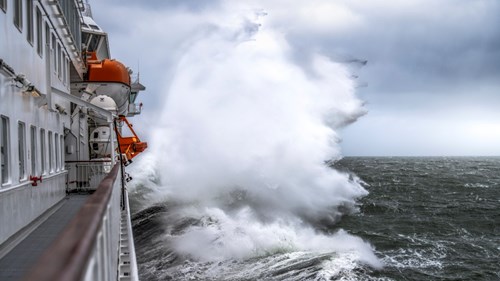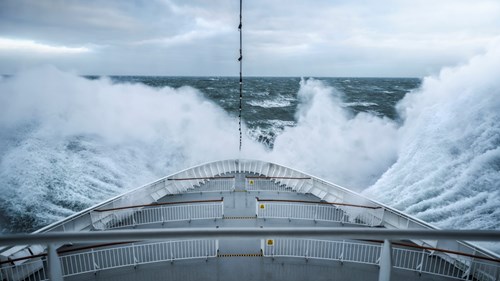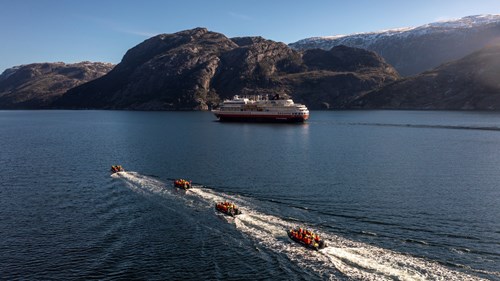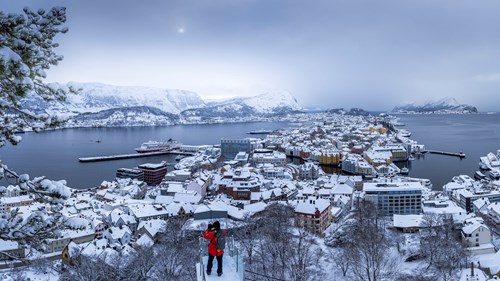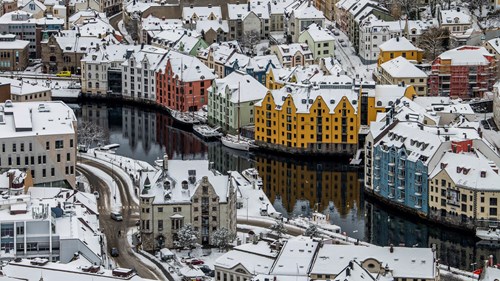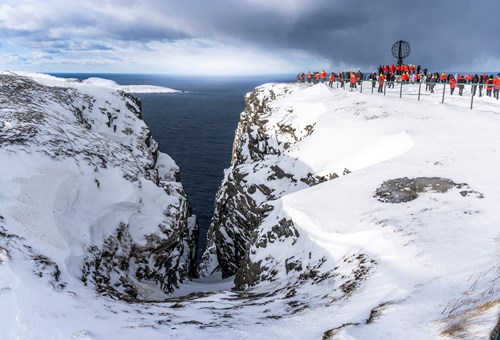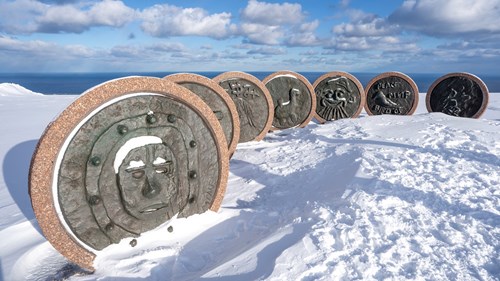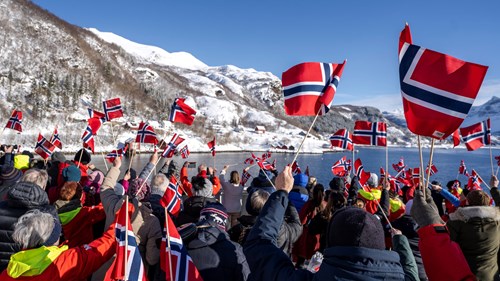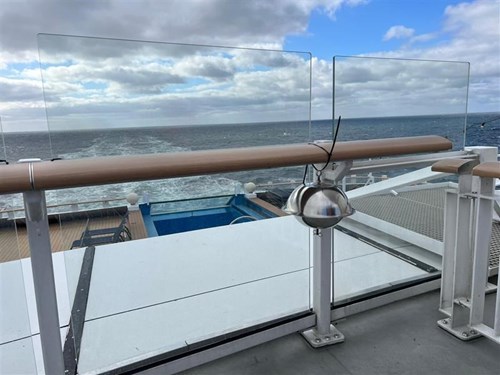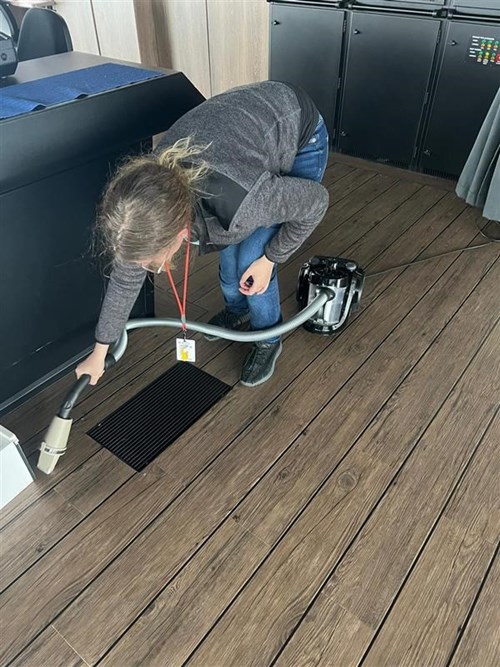Veronica, you've been working on the ShipsChem project since January 2023. Please tell us what you are doing and what is your goal.
Veronica: We are investigating the levels of potentially detrimental chemicals, such as plastic additives and flame retardants, in the indoor environment of cruise ships and trying to determine what chemicals are emitted from cruise ships to the marine environment. Cruise ships have never been studied from this perspective, but we know there could potentially be high levels of flame retardants as the ships are subject to very strong fire safety rules. This information may be necessary for human exposure, especially for crew members who are on board for many weeks or even months at a time. It also means that there is a probability that these substances are also emitted from the ships into the marine environment.
I guess many people would like to research while spending time on cruise ships. What gave you that idea?
Veronica: I wasn't looking for a specific science project. I signed up for a workshop on writing grant applications. It was in 2021 and it was a Marie Skłodowska-Curie Action (MSCA) application workshop. We had to think of a topic suitable for the workshop. My supervisor, Dr. Lisa Melymuk, and I wondered what it could be. I am very passionate about the marine environment. On the other hand, Lisa has excellent research experience on indoor environments and air quality. What about the ship, we thought. It’s a city on the ocean. I looked online to see if anyone had researched this topic and found that they hadn’t. So that’s how the idea came to be.
Did the other passengers know that a scientist performing research on the ship was traveling with them? How did they react?
Veronica: The other passengers were incredibly supportive and very curious. The logistics were excellent. Everyone was aware that I was coming and knew what I was going to do. There were many people on the crew and among the passengers who also had science backgrounds. On the first cruise, there was an engineer who used his holiday time to help me figure out my water sampling apparatus. I was traveling with Hurtigruten Expeditions; they are used to having science on board; they have marine biologists, geologists, and experts from other fields traveling with them. It was a perfect match. The entire crew- from the housekeeping staff to the expedition team- was very helpful and supportive. This happened on both ships, so I was very fortunate. I joked that they adopted me.
Lisa: We initially contacted the cruise line because they had previously worked with the Norwegian Institute for Water Research (NIVA) on the FerryBox program. They once used to be a company that operated a ferry service off the Norwegian coast. The boats were fitted with water quality sensors to check water quality and served as a sampling platform during the North Atlantic cruise. So that’s how we found them in the first place because we asked people from NIVA if they could advise us on some shipping company.
When will you have the first sample results from the cruise?
Veronica: That will be a matter of months; the samples have just been collected and must be analyzed in the trace lab. Our goal is at least two publications. We hope the results will be attractive so we can share them with the International Maritime Organization (IMO).
Lisa: What we are particularly interested in are flame retardants on ships. Flammability is a big concern on ships, so there are very strict flammability standards set internationally by the International Maritime Organization. But this is the first time anyone has studied the impact on the levels of these substances in the interior of ships. Chemical flame retardants are in all the materials on the boat. Documenting their impact on the crew, who spend very long periods on ships, is necessary.
Veronica: Exactly; flame retardants are also in furniture, carpets, and curtains, for example. To make the ship as comfortable and cozy as possible, these items are everywhere on board in large quantities, and we do not know what impact this can have on people and the environment.
What is a part of your research on the ship? How do you get samples?
Veronica: I got my air samples using passive air samplers (jokingly referred to as salad bowls) in different areas on the ship and a few outside. I collected dust samples from different areas inside the ship with a vacuum cleaner. I use air quality sensors to measure how the air quality changes in other parts of the ship. I also collected wastewater from the ship's wastewater system. During the cruise, I also contributed to the science program and gave lectures explaining my project, plastic recycling, and marine plastic pollution.
What made you choose the North Atlantic for your research?
Veronica: It was mainly for logistical reasons. The cruise line Hurtigruten regularly operates cruises in this area. So, it was relatively easy to get to the port of departure. In total, I planned three cruises. I've done two now—one around the Norwegian coast and one to Iceland. The last one will also be along the Norwegian coast from Dover to Alta and back.
So that reason is unrelated to the fact that you would assume that the North Atlantic Ocean, for example, has the most pollution?
Veronica: The environment in the North Atlantic is very vulnerable; the Arctic is already very much affected by climate change. Added to this are the additional stresses put into the environment by, for example, cruise ship companies, which are becoming one of the fastest-growing industries in the tourism sector. Many people are very keen to see the Arctic, which is beautiful, but we must monitor the burden that this places on the area.
The area you have been sailing through is beautiful. What was most interesting to you?
Veronica: The landscape was an absolute highlight. The fjords were incredible, and the snow-capped mountains lining the coast were breathtaking. I'm from South Africa, so it was something entirely different for me than I've had the opportunity to see before. It was just beautiful! My only regret is that I didn't get to see the whales. These are the exact places that humpback whales, killer whales, and many other species migrate south through, but unfortunately, I was a little late on the cruise when they had all started their migration south.
Did you ever think that, as a scientist, you could have such a beautiful job?
Veronica: I hoped science would lead me to beautiful areas, and I am very fortunate it came true. I was given the opportunity to travel the globe from south to north. It's a childhood dream come true for me.
Were you scared on the cruise? I would have expected big waves on the open sea.
Veronica: Yes! I got seasick on the first day. The waves on the North Sea (the area between Germany and Norway) were huge, the water was breaking up to the fourth floor. But when we got to Norway, the sea was completely calm. It was beautiful. All those islands and fjords were like a dream, absolute calm, no wind. I didn’t have any trouble after that.
Your second cruise was to Iceland.
Veronica: Yes, I sailed on one of the first hybrid-electric ships. It is one of the few hybrid-electric ships designed to sail across the ocean, making it a lot more sustainable and environmentally friendly than traditional ships. It has a capacity of about 500 people, so it's smaller than the big cruise ships, but at the same time, it's not completely small. It was very comfortable.
When you talk about the cruises, I can see how much joy the project brings you and how much you look forward to the last of the sails.
Veronica: That's true; I'm very grateful for this opportunity. I am very thankful. I saw the Northern Lights in Norway — it was terrific. In Iceland, which I returned from less than two weeks ago, I couldn't get enough of the geysers again. I stood still and couldn't wait for another one to come out of nowhere. It was addictive. I think I have to start drawing up a new bucket list.
Veronica and Lisa, thank you for a fascinating interview!


